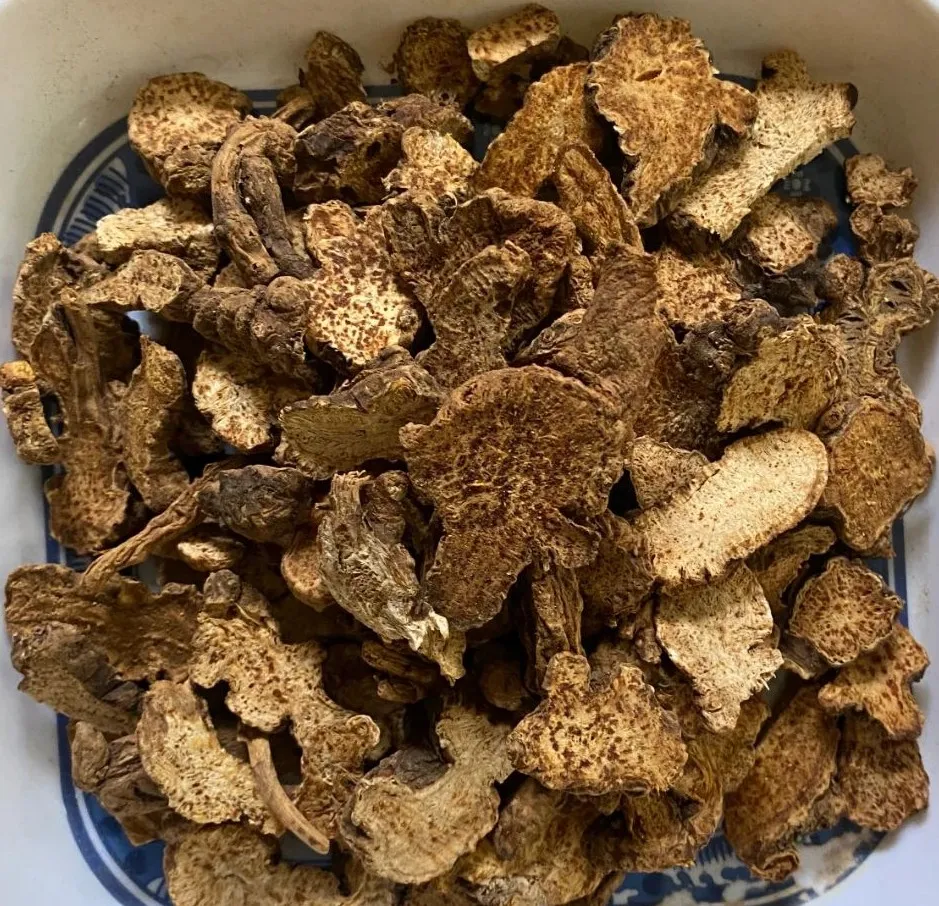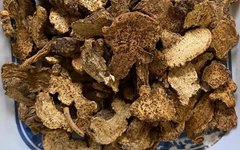
Learn About a Chinese Herb Every Day: Cang Zhu (Atractylodes)
This herb is the dried rhizome of the Asteraceae plant, either Mao Cang Zhu (茅苍术) or Bei Cang Zhu (北苍术). It is mainly produced in Jiangsu, Henan, Hebei, Shanxi, and Shaanxi, with the highest quality coming from the Mao Mountain area in Jiangsu, hence the name Su Cang Zhu (苏苍术). It is harvested in spring and autumn, cleaned of dirt, dried, and the fibrous roots are removed. Mao Cang Zhu has a unique fragrance and a slightly sweet, spicy, and bitter taste; Bei Cang Zhu has a milder aroma and a spicy, bitter taste. The best quality has many red spots on the cut surface and a strong fragrance. It can be used raw or stir-fried with wheat bran.
 Pharmacological Effects: Spicy, bitter, warm. It enters the spleen, stomach, and liver meridians. Functions: Dries dampness and strengthens the spleen, dispels wind and cold, brightens the eyes. Applications: 1. Dampness obstructing the middle jiao, abdominal distension, diarrhea, edema 2. Wind-damp bi syndrome, beriberi 3. Wind-cold common cold 4. Night blindness, blurred vision Distinguishing from Similar Herbs: Cang Zhu, Huo Xiang, and Pei Lan are all aromatic dampness-transforming herbs that have the ability to resolve dampness and are used for damp obstruction in the middle jiao. However, Cang Zhu is bitter, warm, and drying, which can dry dampness and strengthen the spleen, making it suitable not only for damp obstruction in the middle jiao but also for other conditions of excessive dampness; while Huo Xiang and Pei Lan are slightly warm or neutral, primarily used to transform dampness and awaken the spleen, often for conditions of dampness obstructing the spleen.Article content excerpted from – “China Traditional Chinese Medicine Publishing House”
Pharmacological Effects: Spicy, bitter, warm. It enters the spleen, stomach, and liver meridians. Functions: Dries dampness and strengthens the spleen, dispels wind and cold, brightens the eyes. Applications: 1. Dampness obstructing the middle jiao, abdominal distension, diarrhea, edema 2. Wind-damp bi syndrome, beriberi 3. Wind-cold common cold 4. Night blindness, blurred vision Distinguishing from Similar Herbs: Cang Zhu, Huo Xiang, and Pei Lan are all aromatic dampness-transforming herbs that have the ability to resolve dampness and are used for damp obstruction in the middle jiao. However, Cang Zhu is bitter, warm, and drying, which can dry dampness and strengthen the spleen, making it suitable not only for damp obstruction in the middle jiao but also for other conditions of excessive dampness; while Huo Xiang and Pei Lan are slightly warm or neutral, primarily used to transform dampness and awaken the spleen, often for conditions of dampness obstructing the spleen.Article content excerpted from – “China Traditional Chinese Medicine Publishing House”
⊙The content of this article is for clinical thought reference only; non-TCM professionals should not attempt to use herbs.
⊙If there is any infringement, please contact us for removal.

